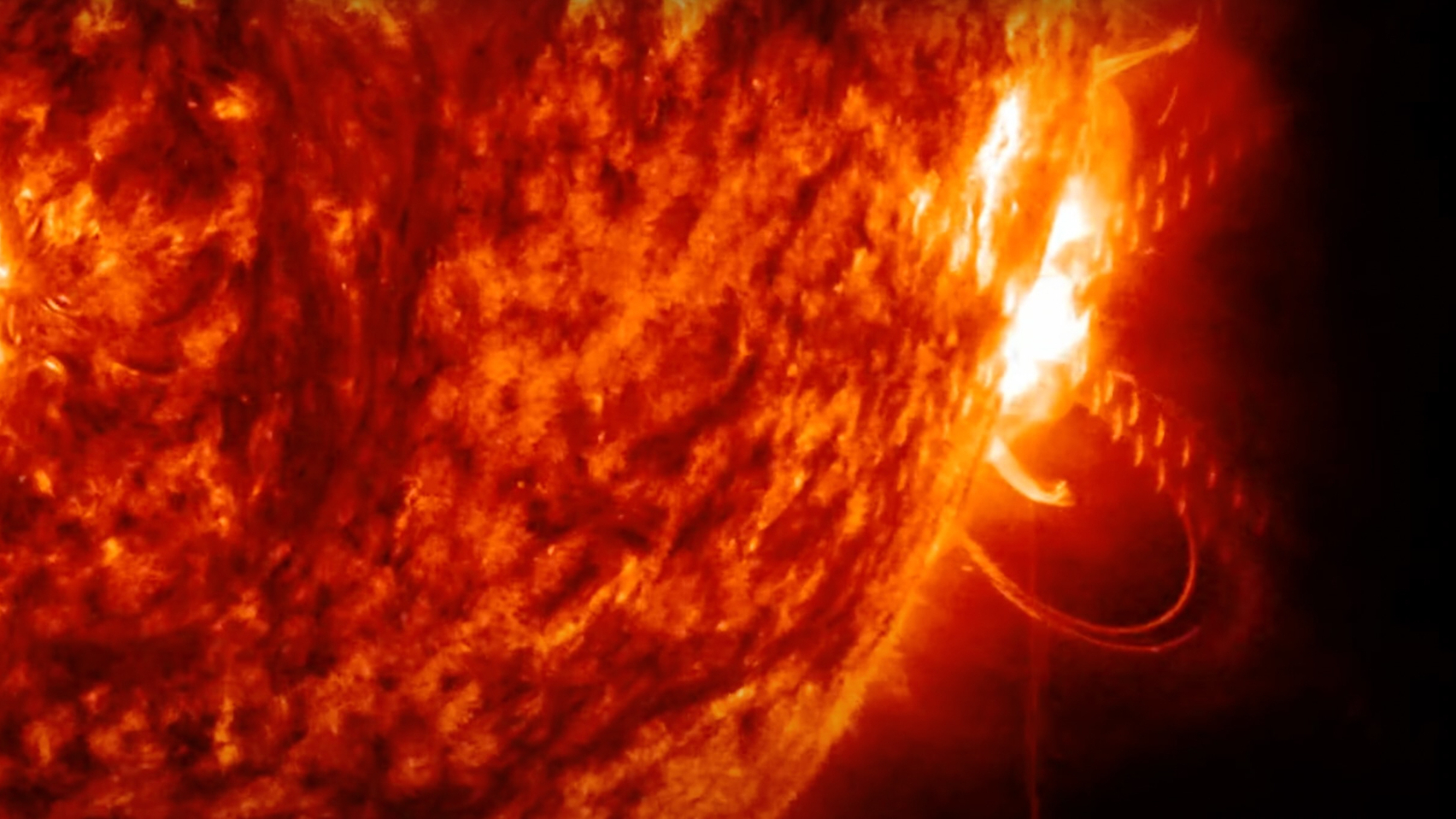Huge, solar flare-launching sunspot has rotated away from Earth. But will it return?
The sunspot AR3664 may not be done with us just yet.

Talk about a dramatic exit!
The sunspot AR3664, which is about 15 times wider than Earth, has finally rotated out of our planet's view — but not before firing off two more big solar storms.
The most recent solar flares from AR3664 were in the X class, the strongest category — an X3.4 monster that peaked today (May 15) at 4:37 a.m. EDT (0837 UTC) and an X2.9 that followed at 10:38 a.m. EDT (1438 GMT).
Related: Watch monster flare-spewing sunspot grow to be 15 times wider than Earth (video)
The big flares that erupted from AR3664 over the weekend were accompanied by coronal mass ejections (CMEs), outbursts that send huge clouds of solar plasma streaking through space. Because the sunspot was facing Earth at the time, those CMEs slammed into our planet, supercharging the aurorae and causing radio blackouts in some places.
However, because AR3664 has now rotated away from our planet, any CMEs that may have been launched along with today's X flares likely won't directly impact us, according to the National Oceanic and Atmospheric Administration's (NOAA) Space Weather Prediction Center (SWPC).
But have we said goodbye forever to this behemoth sunspot? Or will we see it — and, perhaps, impacts from its activity — again? That is a possibility, after all; it takes the sun about 25 Earth days to rotate once on its axis (at the equator; the duration varies considerably by latitude), so it takes about two weeks for many features on the solar surface to come back into view.
Get the Space.com Newsletter
Breaking space news, the latest updates on rocket launches, skywatching events and more!
"There most likely will be a big sunspot cluster still there; it just may not be near as big or complex and angry as it is right now. Generally speaking, it's been my experience that most of them will persist for about two to three weeks very strong and then start to decay, but not necessarily so," Bill Murtagh, program coordinator for the SWPC, told Space.com in a phone interview.
"The Halloween storms is a good example," he added, referring to a memorable solar flurry from late October 2003. "The big region 486 rotated around the limb, and two weeks later we were waiting for it to come back, and there wasn't much to it; it had decayed considerably. But it can happen. That’s a good question, and we'll be watching closely."
As should we all, in case this giant sunspot treats us to another spectacular celestial light show.
Join our Space Forums to keep talking space on the latest missions, night sky and more! And if you have a news tip, correction or comment, let us know at: community@space.com.

Meredith is a regional Murrow award-winning Certified Broadcast Meteorologist and science/space correspondent. She most recently was a Freelance Meteorologist for NY 1 in New York City & the 19 First Alert Weather Team in Cleveland. A self-described "Rocket Girl," Meredith's personal and professional work has drawn recognition over the last decade, including the inaugural Valparaiso University Alumni Association First Decade Achievement Award, two special reports in News 12's Climate Special "Saving Our Shores" that won a Regional Edward R. Murrow Award, multiple Fair Media Council Folio & Press Club of Long Island awards for meteorology & reporting, and a Long Island Business News & NYC TV Week "40 Under 40" Award.
-
billslugg Look at the video at 00:25. The flare occurs and totally overloads the sensors, all we see is a wall of light. But, the camera lens is compound and there are internal reflections off to the side at far lower amplitude. Detailed structure can be seen, showing the area of interest is two tiny blobs right near each other.Reply









